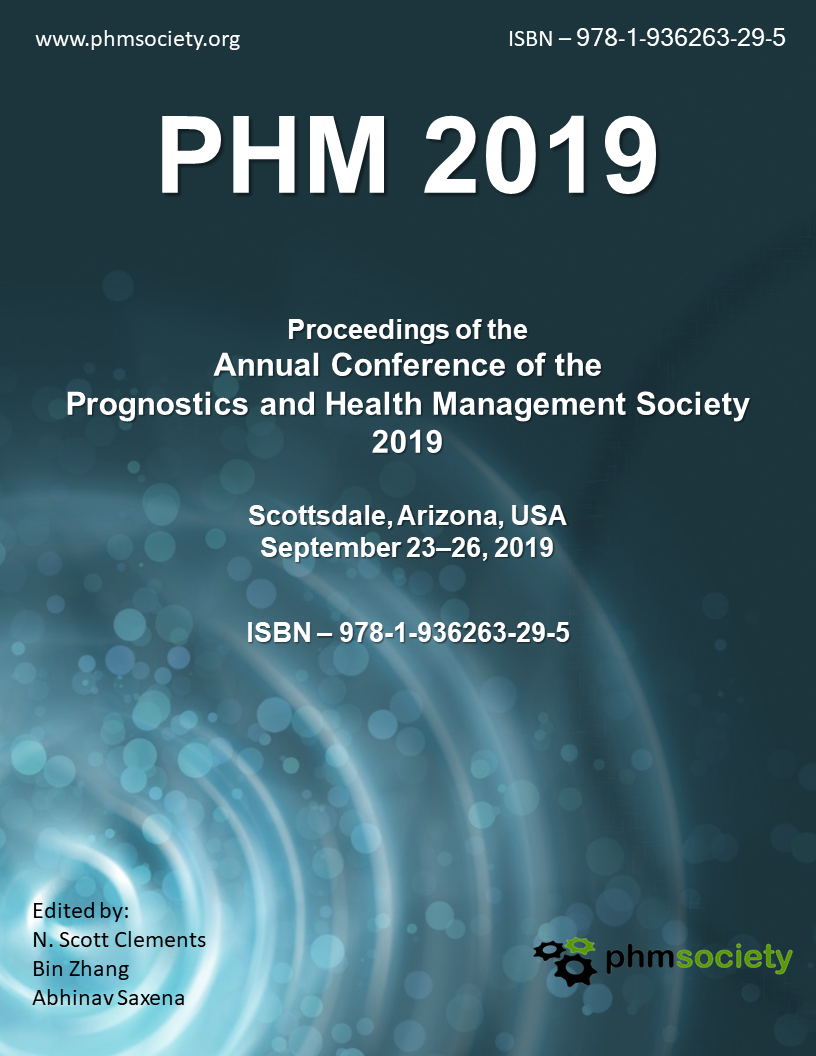A Novel Similarity-based Method for Remaining Useful Life Prediction Using Kernel Two Sample Test
##plugins.themes.bootstrap3.article.main##
##plugins.themes.bootstrap3.article.sidebar##
Abstract
When abundant historical Run-to-Failure (R2F) data is available, the similarity-based method is one of the favored options for Remaining Useful Life (RUL) prediction due to its simplicity and satisfactory accuracy. In this study, a novel similarity-based methodology for RUL prediction is proposed. The proposed method has two important processing steps: similarity matching and Weibull fitting. The similarity matching screens the historical records by a similarity testing called Kernel Two Sample Test (KTST), and only those records that pass KTST are adopted as references for RUL prediction. For the selected similar records, the RUL is predicted as the remaining time to failure. The Weibull fitting fuses the multiple RUL predictions given by similar historical records. The PDF of RUL is estimated as the fitted Weibull distribution. To demonstrate the effectiveness and superiority of the proposed method, the famous CMAPSS data about aero-engine degradation is adopted for model validation. The results demonstrate improved prediction accuracy comparing with other similarity-based approaches and the state-of-the-art deep learning predictors.
How to Cite
##plugins.themes.bootstrap3.article.details##
Kernel Two Sample Test, Remaining Useful Life Prediction

This work is licensed under a Creative Commons Attribution 3.0 Unported License.
The Prognostic and Health Management Society advocates open-access to scientific data and uses a Creative Commons license for publishing and distributing any papers. A Creative Commons license does not relinquish the author’s copyright; rather it allows them to share some of their rights with any member of the public under certain conditions whilst enjoying full legal protection. By submitting an article to the International Conference of the Prognostics and Health Management Society, the authors agree to be bound by the associated terms and conditions including the following:
As the author, you retain the copyright to your Work. By submitting your Work, you are granting anybody the right to copy, distribute and transmit your Work and to adapt your Work with proper attribution under the terms of the Creative Commons Attribution 3.0 United States license. You assign rights to the Prognostics and Health Management Society to publish and disseminate your Work through electronic and print media if it is accepted for publication. A license note citing the Creative Commons Attribution 3.0 United States License as shown below needs to be placed in the footnote on the first page of the article.
First Author et al. This is an open-access article distributed under the terms of the Creative Commons Attribution 3.0 United States License, which permits unrestricted use, distribution, and reproduction in any medium, provided the original author and source are credited.
